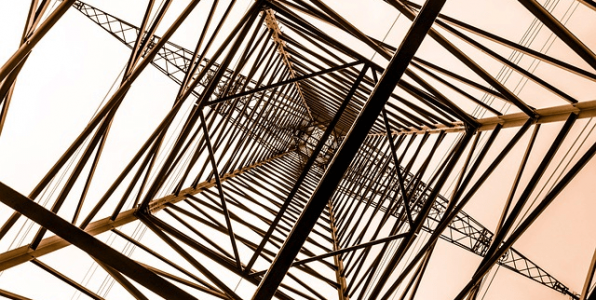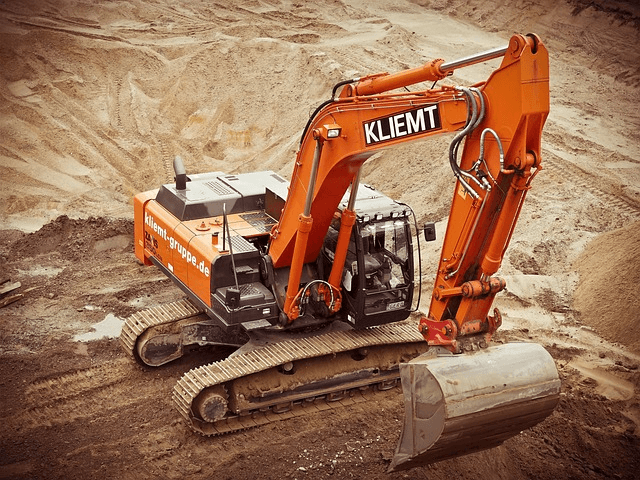Scaffolding Temporary Roof – Benefits and Solutions for 2023

Scaffolding Temporary Roof – Benefits and Solutions for 2023
As construction projects continue to evolve, so do the demands for effective solutions to protect the worksite, personnel, and equipment. One such solution that has gained significant traction in recent years is the use of scaffolding temporary roof systems. But why has this seemingly simple concept become such a crucial component in the construction industry? In this blog post, we delve into the world of temporary roofing, examining its benefits, popular solutions, and how to choose the right system for your project.
From weather protection to cost efficiency, scaffolding temporary roof systems offer a myriad of advantages that make them a valuable asset in construction projects. Whether you are a seasoned construction professional or a newcomer to the industry, understanding the ins and outs of these systems is essential for maximizing their potential. Let’s explore the fascinating realm of scaffolding temporary roof systems and discover how they can revolutionize your construction projects.
Short Summary
- Scaffolding Temporary Roofs provide stability, safety, and weather protection for construction sites.
- Different types of temporary roof covers offer various advantages for a variety of applications.
- Advantages include cost effectiveness, versatility, weather protection and customizable solutions to meet project needs.
Understanding Scaffolding Temporary Roofs

Temporary roof scaffolding plays a crucial role in safeguarding personnel, apparatus, and building materials during construction projects. Designed beyond the scope of “standard scaffolds,” temporary roofs must adhere to the strength and stability calculations outlined in BS EN 12811-1 and the Working at Height Regulations, meeting the minimum requirements of Class 2 as defined in BS5975:2008. Ensuring the stability of the scaffolding is not only critical for the security of the temporary roof, but also for the functionality and safety of the entire construction site.
Temporary roof systems are also known as “tin hat” structures, thanks to their appearance when installed over a building. These systems offer various benefits, including waterproofing and weather protection, making them an indispensable element in construction projects. With the right scaffolding structure and temporary roof cover, you can be assured that your construction site remains protected from harsh weather conditions while providing a suitable environment for essential work to be carried out.
Types of Temporary Roof Covers
When selecting a temporary roof cover, there are several materials to choose from, with corrugated iron, shrink wrap sheeting, and monarflex sheeting being among the most popular options. Corrugated iron roofing entails overlapping metal sheets in a tile-like pattern. While corrugated iron is a cost-effective and reusable solution, it comes with certain drawbacks, such as the lack of light penetration and a labor-intensive installation process.
On the other hand, shrink wrap sheeting offers excellent rain protection, a neat appearance, and the ability to tailor it to the size and shape of scaffolding structures. Monarflex sheeting is another lightweight, waterproof material that is simple to install and provides excellent protection from the elements.
Each of these materials has its own set of advantages, making them suitable for a variety of temporary roofing applications.
Scaffolding Structure Options
Selecting the right scaffolding structure is essential for the effective support of your temporary roof. Options such as aluminium beams, Layher or Haki beam frameworks, and other scaffolding structures can provide the necessary stability and strength. These systems are designed to work with various temporary roof covers, ensuring that the finished structure is suitable for the intended purpose.
It’s important to explore all available scaffolding structure options, as each offers its own set of benefits and drawbacks. The right choice depends on factors such as project size, budget, and the specific needs of your construction site. Ultimately, a well-designed scaffolding structure will ensure the safety and functionality of your temporary roof, allowing for a smooth and efficient construction process.
Advantages of Temporary Roof Systems

Temporary roof systems offer a range of benefits that make them an indispensable asset in construction projects. One of the most significant advantages is their ability to provide weather protection, shielding construction sites from rain, wind, and other weather conditions. This protection ensures the safety of personnel and materials, allowing work to continue even in adverse conditions.
Another advantage is their cost-effectiveness. Temporary roof systems are often more economical than permanent roofing solutions, making them an attractive choice for construction sites. Additionally, these systems can be tailored to fit the size and shape of scaffolding, allowing for a versatile solution to access roofs and carry out essential maintenance and construction tasks.
With these benefits, it’s clear why temporary roof systems have become a staple in the construction industry.
Weather Protection
Temporary roof systems are specifically designed to provide essential protection from the elements during construction or repair projects. By shielding the worksite from rain, snow, and wind, these systems allow for uninterrupted work, ensuring the safety of personnel and materials. The different types of temporary roof systems available, such as corrugated iron, shrink wrap sheeting, and keder roofing systems, each offer varying degrees of weather protection tailored to suit the specific needs of the project.
A well-designed temporary roof system not only protects the worksite from the elements, but also helps maintain a comfortable working environment. This can lead to increased productivity and reduced downtime due to adverse weather conditions. With the right temporary roof system in place, construction projects can progress smoothly and efficiently, regardless of the challenges posed by the weather.
Low Cost Solutions
One of the most appealing aspects of temporary roof systems is their affordability. By offering cost-effective solutions for weather protection and access, these systems provide an attractive option for construction companies looking to keep expenses in check. Traditional corrugated roof sheeting, for instance, is often the most cost-effective option, although the best choice ultimately depends on the specific requirements of the project.
It’s important to remember that the initial investment in a temporary roof system can lead to cost savings in the long run. By providing effective weather protection and enabling uninterrupted work, temporary roofing systems can help reduce project delays and additional labor costs. The key is to carefully evaluate the costs and benefits of each option to find the most affordable and efficient solution for your project.
Customization and Versatility
One of the standout features of temporary roof systems is their ability to be customized to fit any project, regardless of its complexity or size. With a wide range of customization options available, temporary roofs can be tailored to meet the specific needs of each construction project, ensuring that the roof provides the optimal level of protection and accessibility.
Proprietary temporary roof systems, such as Haki, Keder by Layher, and Dessa by Altrad, are renowned for their versatility. Capable of covering extensive spans, highly adaptable, and installable at elevated heights, these systems offer a level of flexibility that makes them suitable for a wide range of construction projects.
By selecting the right temporary roof system, you can ensure that your construction project benefits from a tailored solution that meets its unique requirements.
Popular Temporary Roofing Solutions

As the demand for temporary roofing solutions continues to grow, several options have emerged as popular choices in the construction industry. Among these are corrugated iron roofing, shrink wrap roofing, and proprietary temporary roof systems. Each of these solutions offers unique features and benefits, making them suitable for a variety of construction projects.
It’s essential to familiarize yourself with the popular temporary roofing solutions available in order to make an informed decision when selecting a system for your project. By understanding the characteristics and advantages of each option, you can choose the solution that best meets your project’s requirements, ensuring that your construction site remains protected and functional throughout the duration of the project.
Corrugated Iron Roofing
Corrugated iron roofing is a widely utilized temporary roofing solution, known for its lightweight, durability, and cost-effectiveness. When installed correctly, corrugated iron roofing can be reused and provides a reliable water barrier, making it a popular choice among contractors.
However, there are some drawbacks to using corrugated iron roofing. The lack of light penetration and labor-intensive installation process can be potential disadvantages. Additionally, the Health and Safety Executive is paying increased attention to the construction methods of such roofs, and the NASC is currently attempting to develop a secure system of work for the installation of traditional corrugated temporary roofs, but has yet to provide compliant documentation to their membership.
Shrink Wrap Roofing
Shrink wrap roofing is another popular temporary roofing solution. This lightweight, waterproof, and cost-effective material is easy to install and can be utilized in a variety of applications. The advantages of shrink wrap roofing include cost-effectiveness, quick installation, and practicality, making it an attractive option for many construction projects.
However, employing a shrink wrap roof is typically limited to roofs with short spans and necessitates the need for extra scaffolding access, thereby increasing costs and requiring construction away from the surfaces that need to be repaired and safeguarded.
Despite these limitations, shrink wrap roofing remains a popular and practical choice for smaller projects where its benefits outweigh the drawbacks.
Proprietary Temporary Roof Systems
Proprietary temporary roof systems, such as Haki, Keder by Layher, and Dessa by Altrad, offer a versatile and safe alternative to traditional temporary roofing solutions. These systems are designed with enhanced safety, adaptability, and cost efficiency in mind, making them an attractive choice for construction companies looking for a reliable and effective temporary roofing solution.
While proprietary temporary roof systems may have some limitations in terms of availability and compatibility with preexisting structures, their benefits often outweigh these drawbacks. With their focus on safety and versatility, proprietary temporary roof systems provide an excellent option for construction projects that require a tailored and reliable roofing solution.
Choosing the Right Temporary Roof for Your Project

When it comes to selecting the most appropriate temporary roof system for your construction project, there are several factors to consider. These include the type of material, budget, weather conditions, and the duration of the project. By carefully evaluating these factors, you can ensure that you choose the best temporary roof solution for your specific needs.
In addition to assessing project needs, it’s also essential to compare the costs and benefits of different temporary roofing solutions. This involves considering factors such as the cost of materials, installation, and maintenance, as well as the durability and weather protection of the roof. By taking the time to carefully evaluate all available options, you can make an informed decision that will benefit your construction project in the long run.
Assessing Project Needs
Evaluating project specifications is a crucial step in determining the best temporary roof solution for your construction project. By taking into account factors such as project planning, installation speed, weather resistance, aesthetics, and cost, you can ensure that you select the most suitable temporary roof system for your specific requirements.
Furthermore, it’s important to consider the dimensions and configuration of the building, prevailing weather conditions, and the duration of the project when assessing your project’s needs. By carefully evaluating all relevant factors, you can select the temporary roof system that best meets the unique requirements of your construction project.
Comparing Costs and Benefits
In order to make the best decision for your construction project, it’s essential to weigh the pros and cons of each temporary roofing option in terms of cost, installation time, and overall effectiveness. Evaluating the costs and benefits of a temporary roof involves considering factors such as project planning, the speed of installation, weather resistance, aesthetics, and the material used.
By taking the time to carefully assess the advantages and disadvantages of each option, you can make an informed decision that will provide the best value for your project. This will ensure that your construction site remains protected and functional throughout the duration of the project, while also remaining within budget.
Tips for Proper Installation and Maintenance

Once you’ve selected the most suitable temporary roof system for your construction project, it’s essential to follow best practices for installation and maintenance. Proper installation and maintenance are crucial for ensuring the longevity and effectiveness of your temporary roof system, helping to protect your construction site and personnel from the elements.
By adhering to the recommended installation procedures and conducting regular inspections and maintenance, you can ensure that your temporary roof system remains in optimal condition throughout the duration of your construction project. This will help minimize the risk of potential issues or failures, ensuring that your project runs smoothly and efficiently.
Safe Installation Procedures
Safety should always be the top priority when installing a temporary roof system. To ensure the safe installation of your temporary roof, it’s essential to adhere to the legal requirements and guidelines for roof work, including planning and organizing the work, utilizing the appropriate equipment, and ensuring safe access and edge protection.
By following best practices and adhering to safety regulations, you can minimize the risk of accidents and ensure the safe installation of your temporary roof system. This will help to protect your personnel and equipment, while also ensuring the overall success of your construction project.
Regular Inspection and Maintenance
Routine inspection and maintenance are essential for preserving the integrity of your temporary roof system. Regular inspections should be conducted by a competent individual to assess for any signs of damage or deterioration, ensuring that all components are properly fastened and that the roof is adequately supported and stable.
By conducting regular inspections and addressing any issues promptly, you can help prevent potential problems or failures, ensuring the longevity and effectiveness of your temporary roof system. This will ultimately contribute to the overall success of your construction project, allowing work to continue uninterrupted and on schedule.
Summary
In conclusion, temporary roof systems are an essential component in modern construction projects, providing invaluable protection, cost efficiency, and versatility. By understanding the various options available, carefully evaluating project needs, and following best practices for installation and maintenance, you can ensure the success of your construction project and the safety of your personnel and equipment. With the right temporary roof system in place, you can confidently tackle any construction challenge, regardless of the weather conditions or project complexity.
Frequently Asked Questions
What is temporary roof scaffolding?
Temporary roof scaffolding is a structure used to support a covering, typically waterproof tarpaulins, while workers repair and secure roofs. This covering helps protect the roof from additional damage caused by the weather while repairs are being completed.
What pitch is a scaffold temporary roof?
A scaffold temporary roof should be installed at a minimum pitch angle of 10-15 degrees in order to provide elasticity and proper tensioning. This angle is known as the double-pitch roof.
What can I use for a temporary roof?
You can use a tarp as a temporary roof. This is an effective solution that is easy to install and relatively cheap. Tarps are also available in various colors and sizes, making them ideal for short-term solutions.
How do you work a roof without scaffolding?
Working a roof without scaffolding is possible, as long as the roof has minimal pitch and there is safe access via ladders and other climbing equipment. Additionally, using chutes to dispose of material can reduce the need for scaffolding.
With appropriate safety equipment and risk assessment, it is possible to work on roofs without scaffolding.
Comments are closed